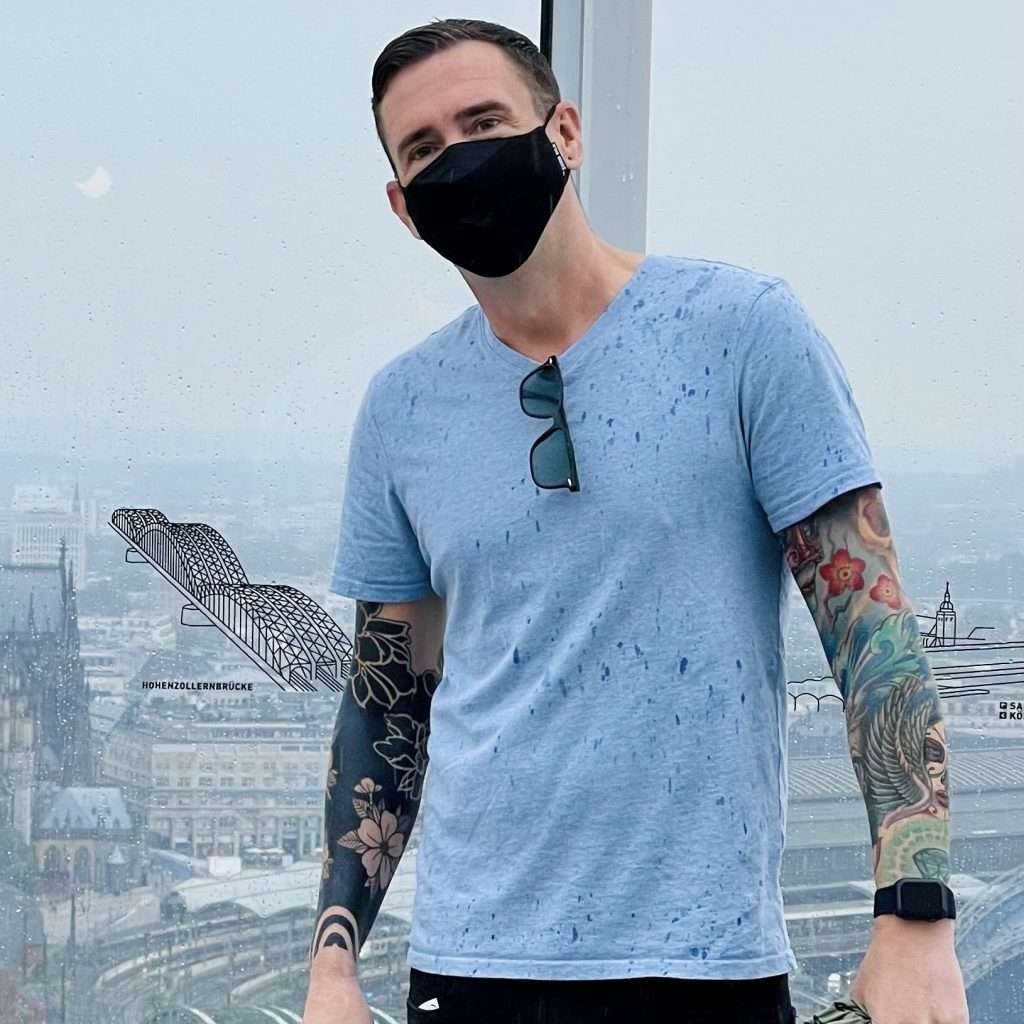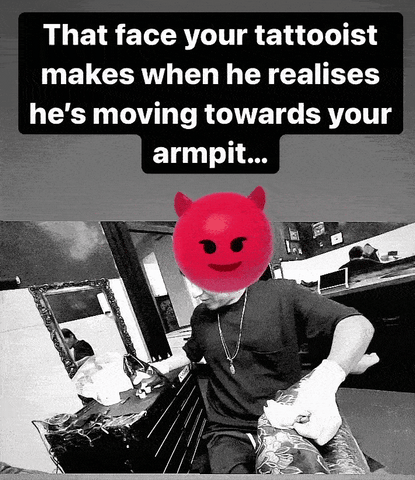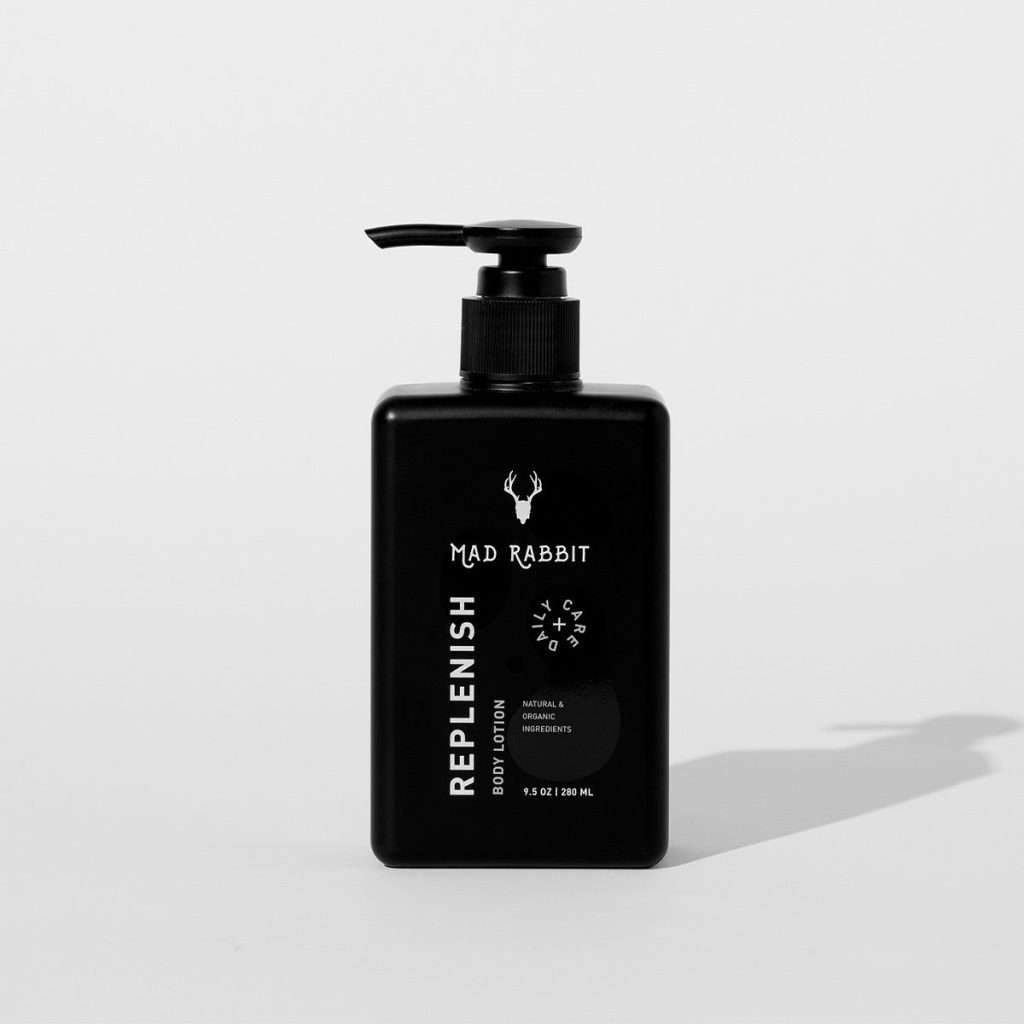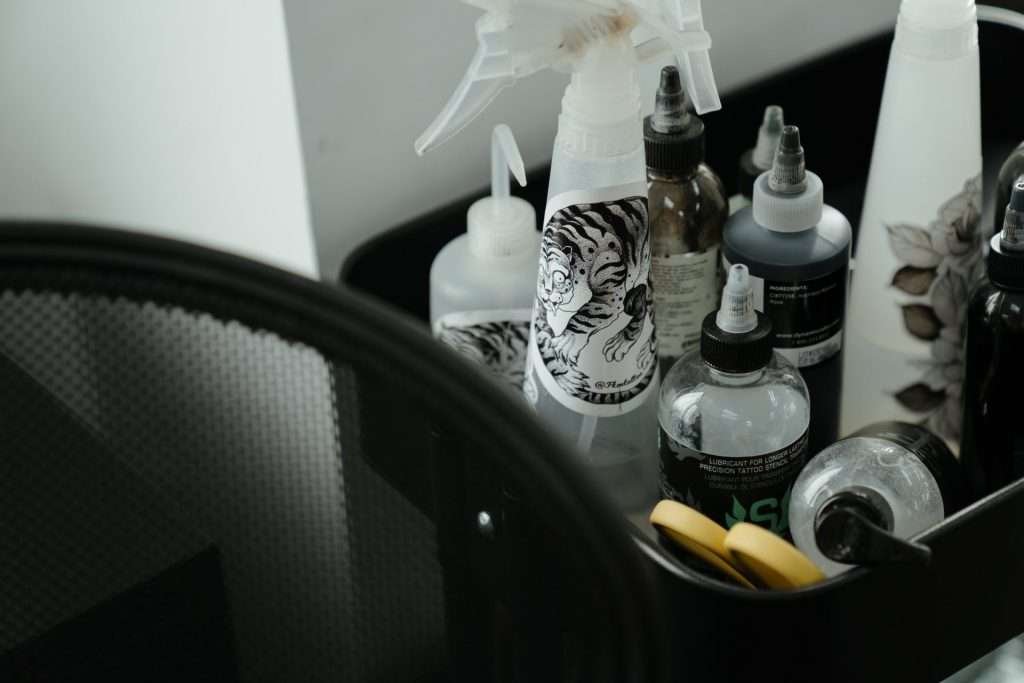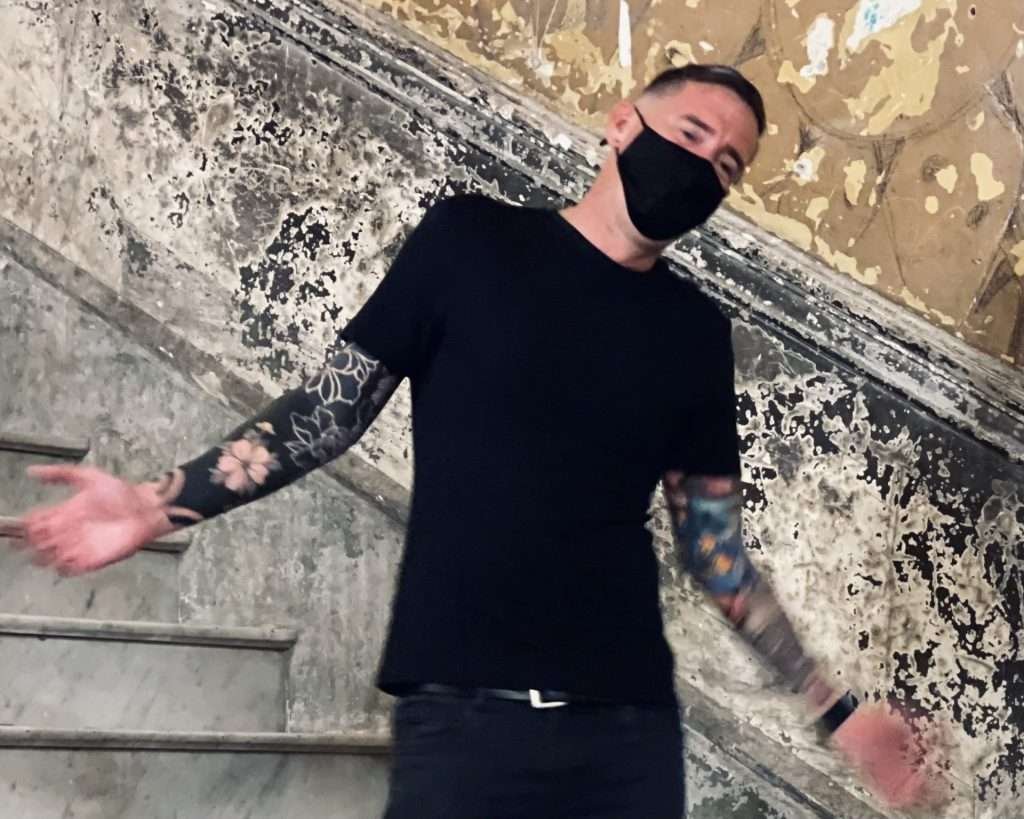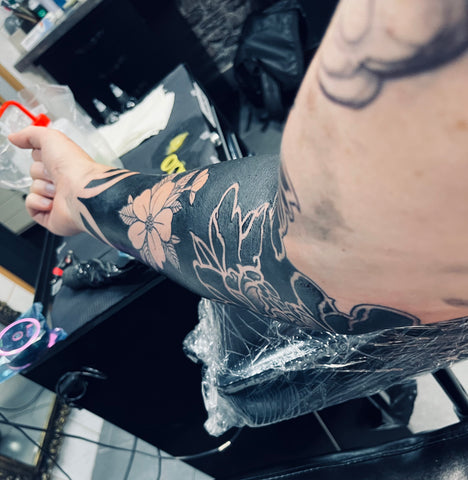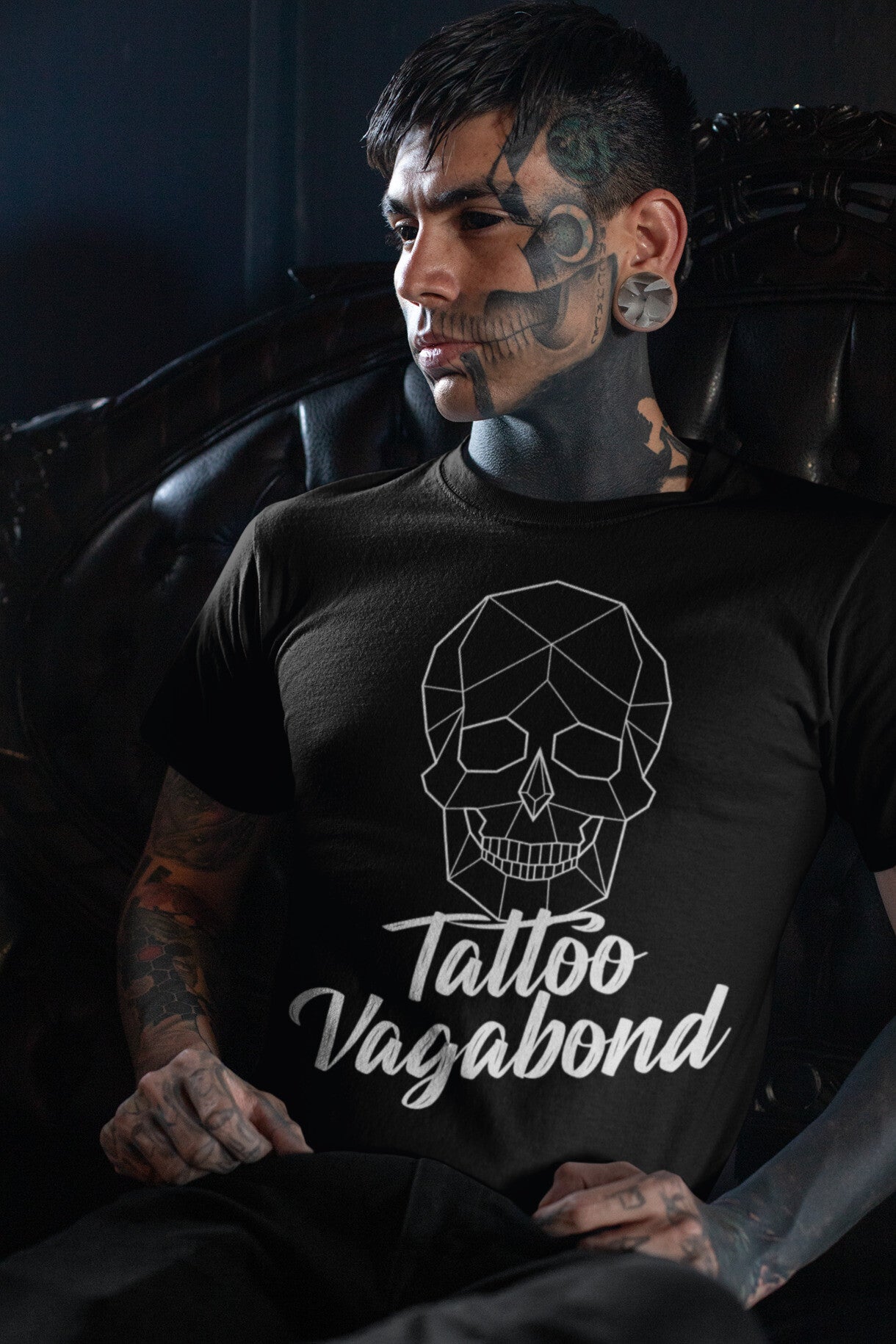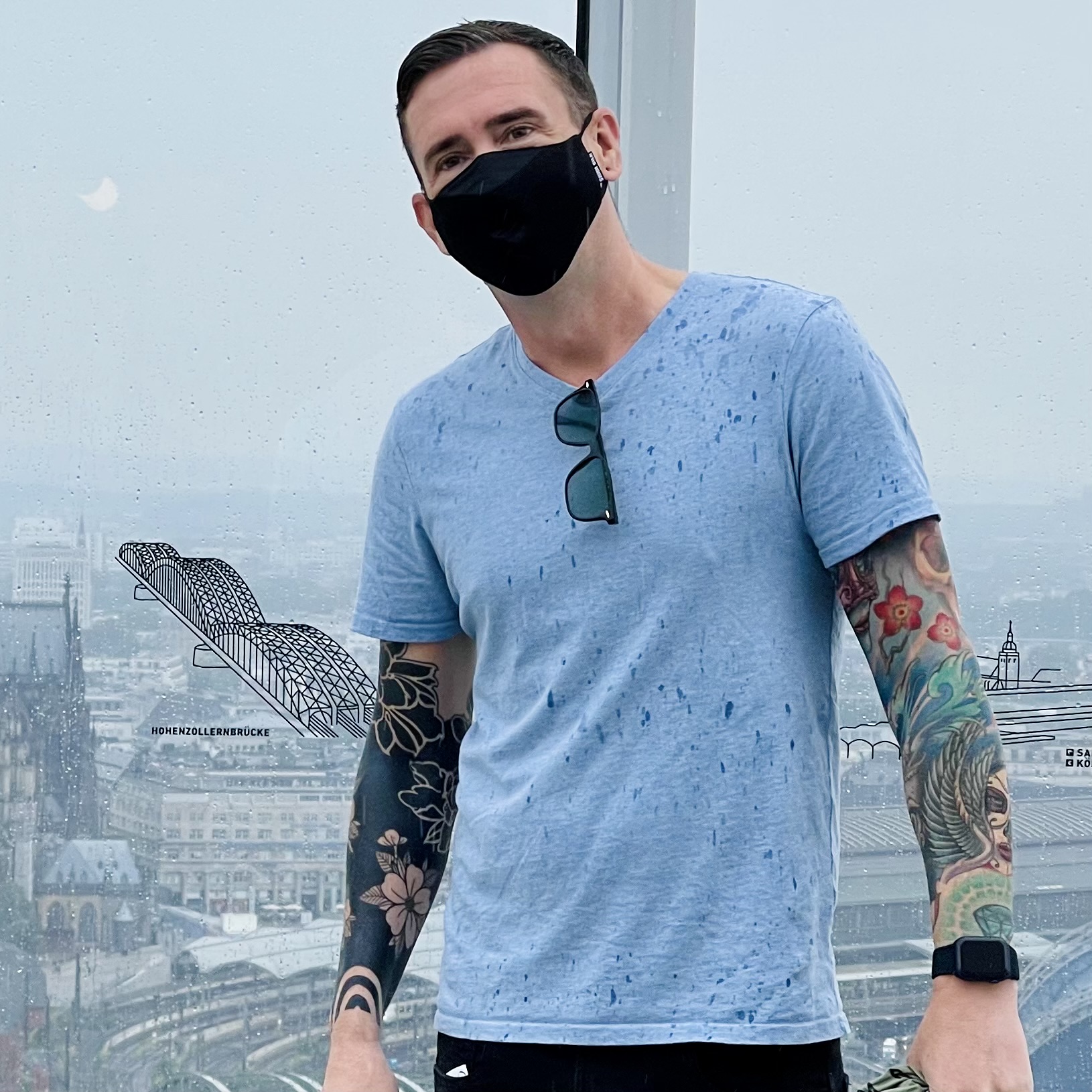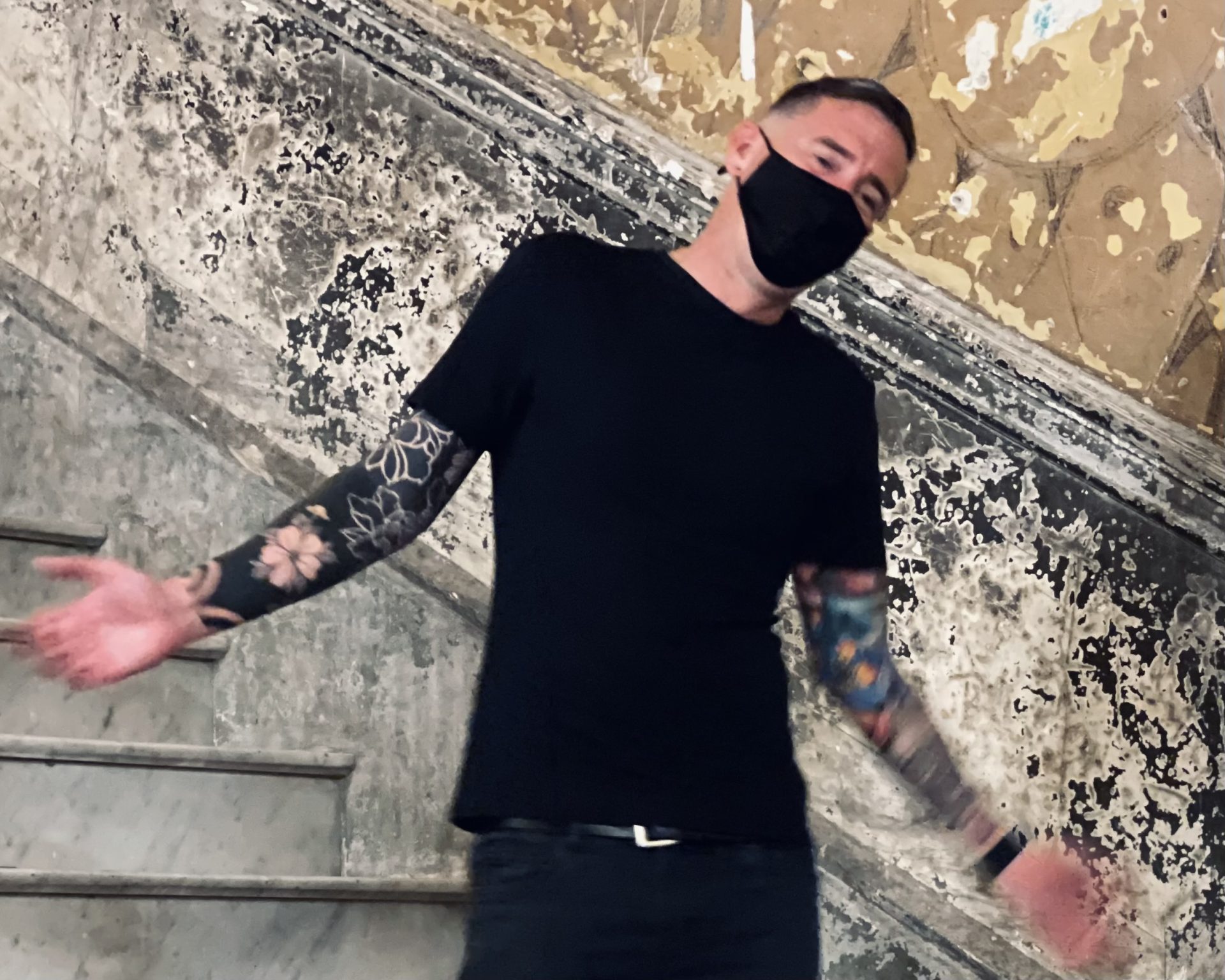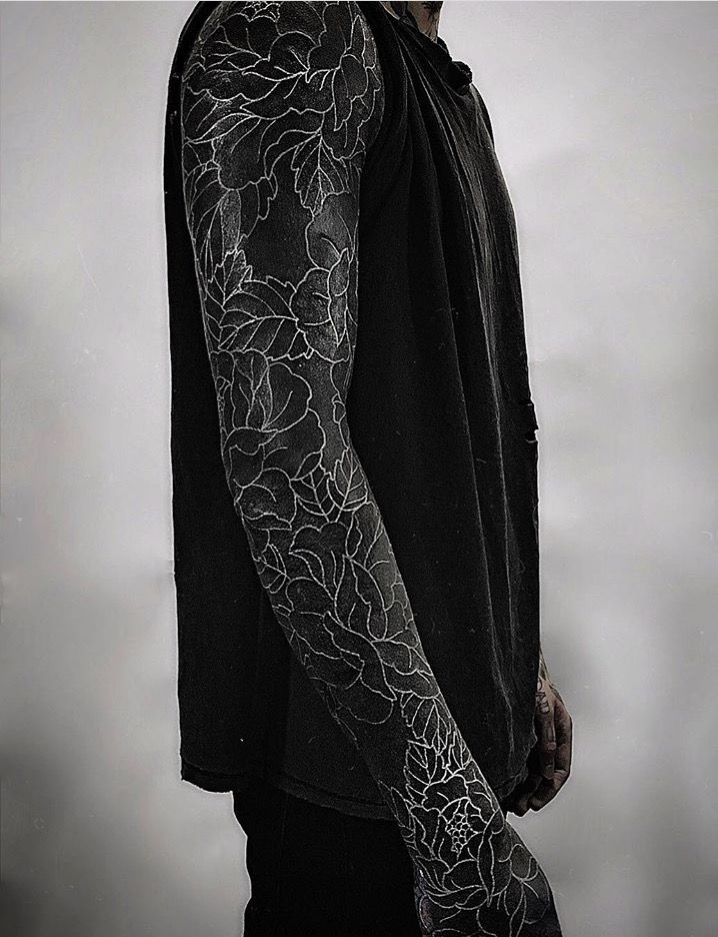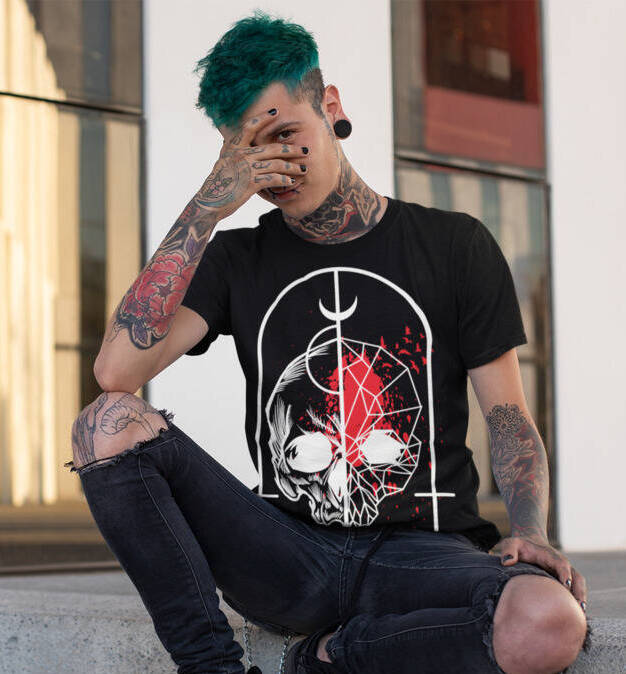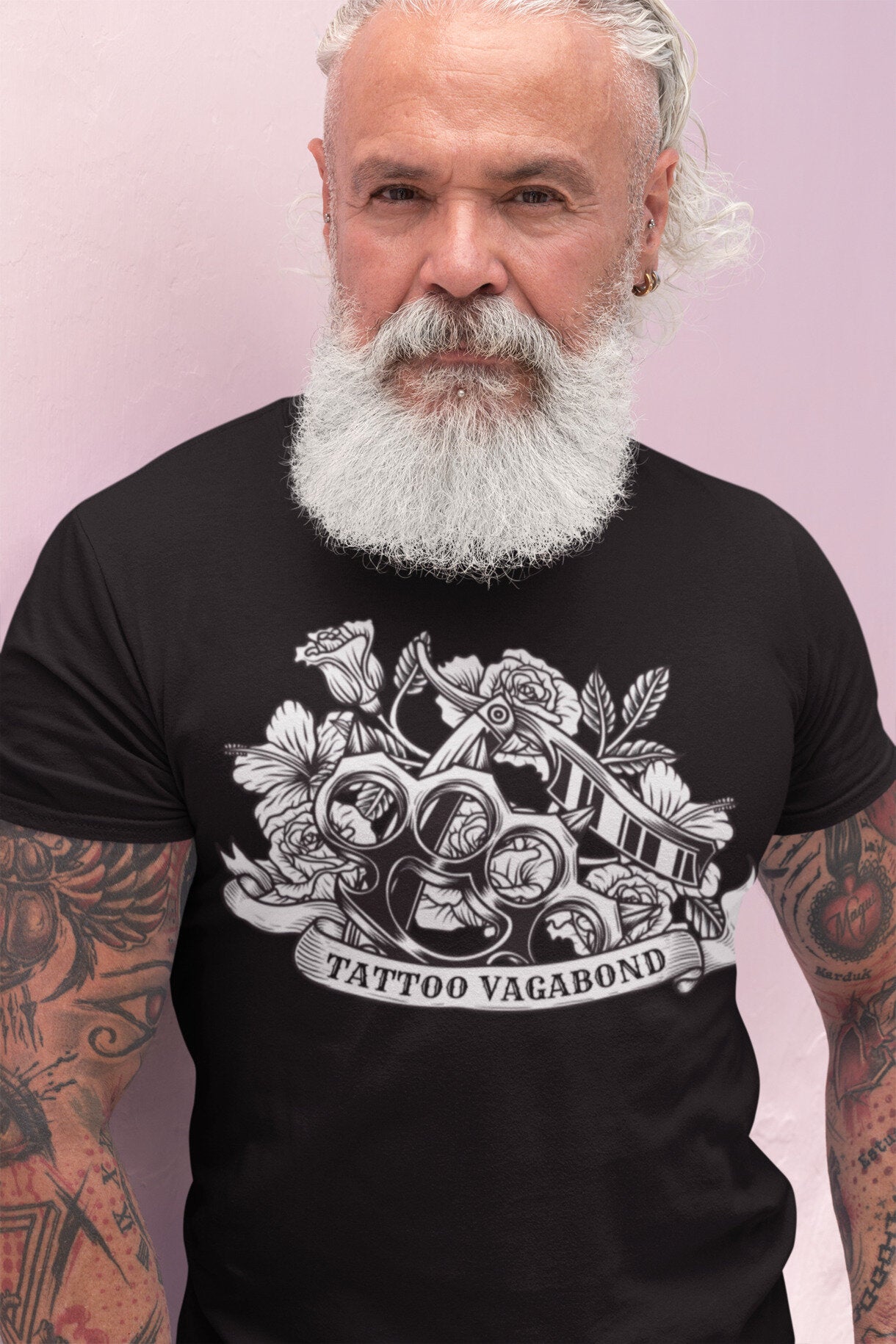You’ve probably seen the headlines and chatter online about blackout tattoos. Article titles claiming blackout tattoos are a ‘bad idea’ or ‘really bad idea’ abound on the internet.
On the major search engines, you’ll find articles where a couple of talking heads with no actual experience, parrot misinformation they’ve found on the internet. Or results for forums like Reddit and Quora, where everyone throws in their opinion, with no actual experience to backup anything they write. So, it’s no wonder there’s a lot of confusion surrounding blackout tattoos!
Now, I actually have a blackout tattoo sleeve. I’ve been through the process of getting one myself. And I’ve had it for more than a few years now. So, I’m writing this article with the intention of clearing up the misinformation about blackout tattoos, that is everywhere online.
Misconceptions & Misinformation Surrounding Blackout Tattoos
The 14 Most Common Misconceptions About Blackout Tattoos
Before you go delving into this article, I need to warn you that it’s a long one. And it’s long by necessity. There’s so much misinformation about blackout tattoos circulating on the internet and constantly being rehashed by every new website that pops up, that there is a lot of ground to cover in this article.
But, throughout this article you should keep one thing in mind. And that thing is that you shouldn’t believe everything you read on the internet.
One of my biggest gripes in the tattoo space, is that relatively few of the people writing articles about particular styles of tattooing, have the real world qualifications and experience to accurately cover the topic.
Unlike a lot of others discussing the topic of blackout tattoos, who often have no tattoos at all (yes you read that right), I actually have a blackout tattoo. I actually have the style of tattoo covered in this article.
Now, what you’ll read below is based on real world experience. Yet, what’s more, I can actually make accurate comparisons to dispel some of the myths. Because I’ve had both of my tattoo sleeves done by the same artist. My colored tattoo sleeve and my blackout sleeve were completed by the same tattooist.
I’m not going to go into my own reasons for getting a blackout tattoo. You’ll find other articles on this website detailing why I got my blackout tattoo and who my artist was. And I’m not going to go over the misinformation and myths that surround tattoos in general.
I’m simply going to take aim at the misinformation surrounding blackouts.
Now, with that said, here are the 14 most common misconceptions about blackout tattoos that get constantly repeated as objective fact. And that are actually, completely wrong!
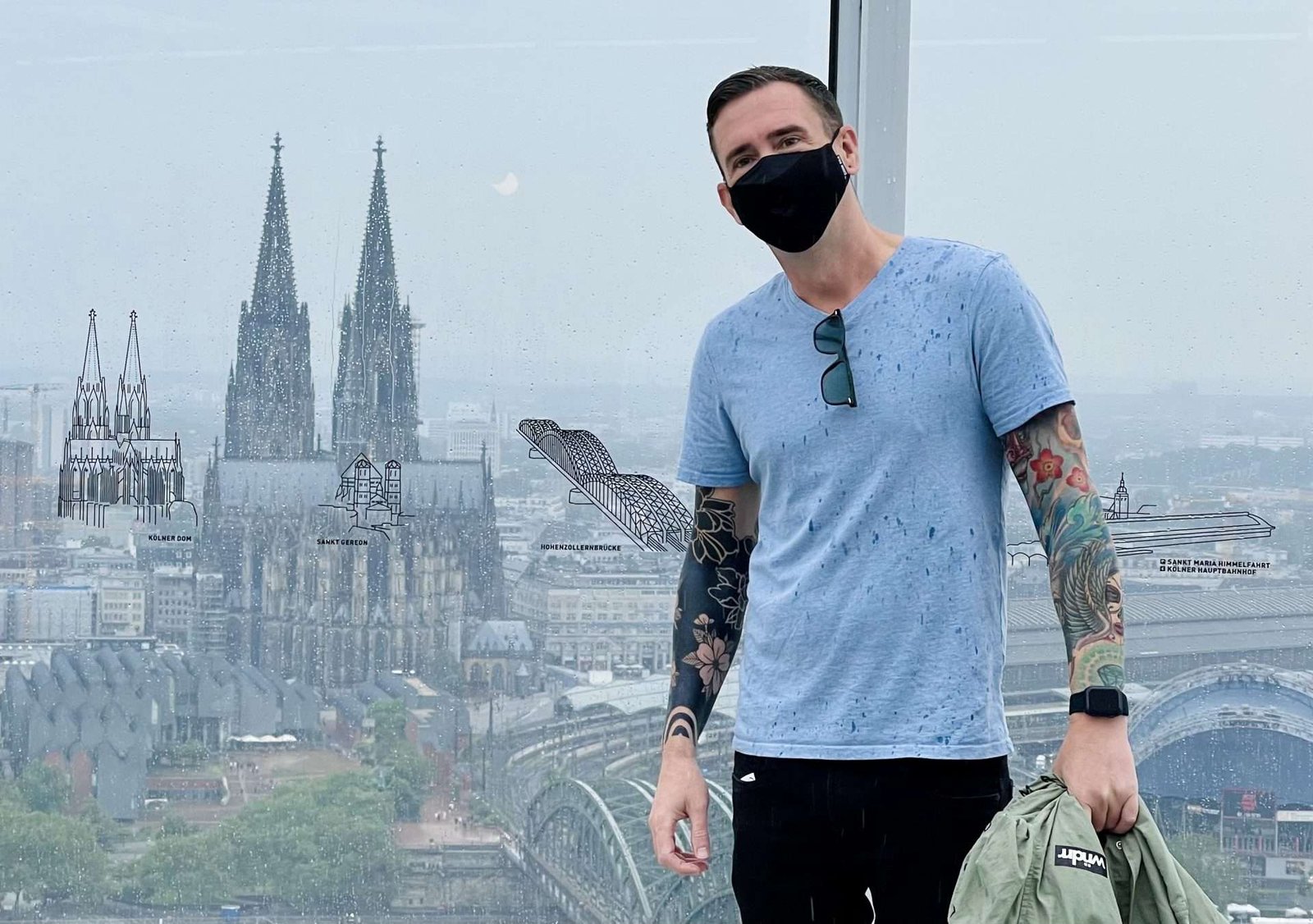
Any Artist Can Create A Stunning Blackwork!
Creating top-quality blackout tattoos requires a specialized skill set and attention to detail that not every tattooist possesses. It’s a challenging style that demands precision and expertise to achieve the desired flawless, solid black outcome. From my experience, there are several key factors that contribute to the difficulty of producing a quality blackout tattoo.
First and foremost, using a high stroke tattoo machine with a 4 to 4.2 stroke is vital. This type of machine is designed to collect more pigment and deliver a harder hit, ensuring the dense blackness required for blackout tattoos. Pairing this with Straight Magnums featuring a 12 gauge diameter needle is crucial. These needles create larger puncture holes, allowing for a faster ink flow and more efficient coverage, contributing to the overall quality of the blackout tattoo.
Consistency is the linchpin in blackout tattooing. Maintaining the same depth, speed, passes, machine angle, and pressure throughout the session is essential to avoid patchiness or uneven healing. It’s a meticulous process that demands unwavering attention to detail and technical control.
Opting for a higher viscosity, thicker pigment is non-negotiable. Throughout the session, it’s crucial to consistently check the pigment to maintain the blackout tattoo’s uniformity. The tattooist needs to ensure a smooth and consistent application of the ink, essential for achieving a solid black appearance.
In essence, the creation of a quality blackout tattoo demands a unique combination of technical proficiency, specialized equipment, and a meticulous attention to detail. And not every tattooist possesses the expertise or resources required to master the intricacies of blackout tattoos.
It’s a common misconception that any tattooist can create a stunning blackout or master the intricacies of blackwork. And articles online with ‘expert’ interviewees claiming blackout tattoos ‘are a bad idea’, when they aren’t specialized in blackwork and work in other styles (like fine-line and portrait), should be treated with skepticism.
Do Blackout Tattoos Take Longer To Tattoo?
I have two tattoo sleeves. One is a colored sleeve and the other is a blackout. Both sleeves were produced by the same artist. And, contrary to popular opinion on the internet, my blackout was completed in roughly half the time it took to complete my colored sleeve.
Blackout tattoos don’t take longer to tattoo. It’s a common misconception that blackout tattoos take longer to produce. A skilled blackwork artist working on a blackout, can cover a larger area per tattoo session. Particularly if they’re using specialized equipment. Blackout tattoos do not take longer to produce.
Do Blackout Tattoos Cost More?
The two most important factors when discussing the cost of a tattoo are the amount of time and resources it takes to produce. When you’re getting a tattoo, you’re basically paying for the artists time and the disposable resources like needles, ink cups and inks used in the process.
The longer a tattoo takes an artist to produce, the greater the cost. The more resources needed to complete the tattoo, the greater the cost. And the skill of an artist will contribute to the price of a tattoo. But a skilled artist working within a style they specialize in, often works faster than an artist with lesser skill. So, skill roughly balances itself out when it comes to pricing.
Now, like I said above, I used the same artist for both my colored sleeve and my blackout sleeve. On the blackout sleeve I needed less sessions and he used less consumables. He also produced my blackout in roughly half the time it took him to create my colored sleeve.
As a result, my blackout was substantially cheaper than my colored sleeve. And I can say with certainty that a blackout tattoo will cost less than a detailed colored tattoo of the same size. Because it can be completed faster and with the use of less consumable items.
Are Blackout Tattoos More Painful?
This is a tricky one to answer. Because the answer is both yes and no. Larger tattoos and longer sessions are more painful than smaller tattoos and shorter sessions.
Like I said above, a specialist blackwork artist creating a blackout will complete the piece in a shorter timeframe when compared to a similarly sized colored tattoo. And this is because the tattooist can cover a larger surface area per session. Now, tattooing a larger surface area per session and packing more ink during each sitting, will cause more discomfort. You’ll feel more pain when getting a blackout tattoo.
Yet, the internet chalks the added pain and discomfort up to the style of tattoo and the color of the ink. One of the top articles online claims that tattoos using only black ink, are more painful to get. And this simply isn’t true.
Black tattoo ink does not have any inherent properties that will make it more or less painful. In fact, when it comes to older tattoo inks that were once used, red was the most painful color of tattoo ink. But this changed with modern inks. Red is still the most likely to cause an allergic reaction, but pain during the tattooing process is no longer influenced by ink color.
When it comes to blackout tattoos, it’s the size of the cartridge (needles) and the bodily surface area covered by the artist per session that is the root cause of the added pain and discomfort associated with blackout tattoos. Pain has nothing to do with the color of the ink (black). And if you’re worried about tattoo pain when getting a blackout tattoo, simply use the best available tattoo numbing cream for blackout tattoos.
Do Blackout Tattoos Take Longer To Heal?
Blackout tattoos do take longer to heal and they require a more regimented aftercare routine. Yet, blackout tattoos don’t take longer to heal for the reasons you may have read elsewhere.
Blackout tattoos take longer to heal due to their size and the bodily surface area covered in each tattoo session. Because your tattooist will be able to work faster, covering a larger surface area per session, the area that will need to heal will be larger.
With a larger tattoo to care for, you will need to be much more attentive to aftercare. The normal tattoo healing stages still apply, they will just be a little more irritating and they’ll take a little longer. You can also expect your larger blackout tattoo to be a little more itchy than a smaller tattoo.
With a proper aftercare routine, your blackout tattoo will heal just fine, without keloid scaring or ink drop. So there’s no reason to panic. And if you’re looking for the best way to heal a blackout tattoo, you’ll find detailed guides that are based on real world experience, on this website.
Dry Healing A Blackout Tattoo Is Better!
You should never attempt to dry heal a blackout tattoo, no matter what the internet might say. Dry healing is something you should absolutely avoid when getting a blackout tattoo.
I can tell you from experience that when I had my blackout tattoo done, if I let my tattoo get a little too dry after showering and before I applied a proper tattoo aftercare product, I could feel it getting stiff, sore and crunchy. There was almost immediate feedback in the form of pain, if I let my blackout dry out.
Dry healing large tattoos can lead to excessive scabbing, ripping and ink drop. It can result in a patchy appearance that you’ll need a touch up to fix. Never attempt to dry heal a blackout tattoo. Any website that recommends dry healing a blackout tattoo is giving you bad advice!
Blackout Tattoos Fade Faster!
Not true! Blackout tattoos don’t fade any faster or slower than other styles of tattoo. In fact, black is one of the longer wearing colors in a tattoo. Lighter inks tend to fade faster. And whites, oranges, reds and yellows, plus pastel colors, will fade the fastest.
On my own tattoo sleeves, which are exposed to the sun far more than the rest of my tattoos because of their location, it’s the yellows, reds and pinks which fade the fastest. My blackout sleeve hasn’t even begun to fade. And it’s been with me for quite a few years now.
Lightly colored tattoos and those with very fine applications, like watercolor tattoos, will tend to fade much faster than tattoos making use of solid black ink. A blackout is one of the longest wearing tattoos that you can get.
However, you should note that your longer term aftercare is an important factor in how your tattoos will age. You need to make sure that you’re applying a strong sunblock when in the sun. And you should also regularly apply a moisturizer, even after your tattoo has healed.
Like any other form of art, you need to look after your tattoo. Or it will begin to show signs of wear and tear.
All Blackout Tattoos Turn Blue or Green!
If your tattoo artist is a specialist in blackwork and if they’re using the right inks, then your tattoo won’t turn blue or green. The color change everyone talks about online, often happens with cheap inks and occurs through the natural process whereby your body begins to break down the different base components in the ink.
The base colors in a lot of darker tattoo inks are blue and green. And blue in particular, is one of the harder colors for your body to break down and remove. It often contains toxic chemicals that can cause cancer when broken down. Which is why the EU has actually banned some colors including ‘blue 15’ and ‘green 7’.
Now, if you’re getting a blackout from an artist who’s skilled in blackwork and knows what they’re doing, then they’re going to use specialized inks like Eternal, Intenze, Kuro Sumi or Panther. All of which are both organic and vegan.
A specialist in blackwork is not going to be using Chinese brands or white-labeled Chinese made inks, purchased from AliExpress. These cheap Chinese inks don’t disclose their ingredients and have poor quality control.
My own sleeve is using Panther Ink XXX. Panther Ink is organic, vegan, halal and cruelty free. And it has none of the major allergens found in some tattoo inks. Its primary components are Hamamelis Virginiana extract and Carbon Black (CI 77266). It meets the strict EU regulations and it does not fade into blue or green over time.
After almost 5 years, my negative space blackout sleeve hasn’t even begun to fade at all. And it looks like it did, the day I got it done. It has no blue or green tinges and it shows no signs of wear and tear.
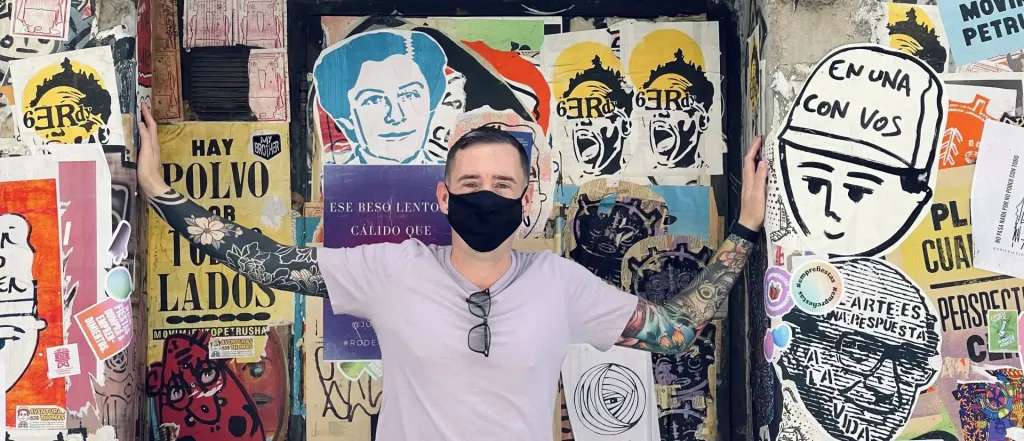
Blackout Tattoos Are Bad for Your Health!
As you can clearly see in the image above, I have both a colored tattoo sleeve and a blackout tattoo sleeve. I’m more concerned about the health effects of the colored sleeve, than I am about the blackout.
The black tattoo ink used on my blackout sleeve contains only 2 primary ingredients. And both of them are inert and organic. Yet, my colored tattoo sleeve uses a myriad of colors that contain everything from copper and chromium through to titanium dioxide. Colored tattoo inks are packed with heavy metals, whereas the black tattoo ink used to create my blackout sleeve is not.
With that said, once again it comes down to whether or not you’ve used an artist skilled in blackwork. One who knows what they’re doing and hasn’t used cheap inks.
Cheap black tattoo inks can contain very high levels of a substance called ‘Benzo(a)pyrene’, which is a known allergen and carcinogen. And my own tattoo sleeve contains no ‘Benzo(a)pyrene’, because my tattoo was completed by a skilled artist using quality inks.
Black Inks Are More Likely To Cause An Allergic Reaction
No, blackout tattoos that are completed by a skilled artist using quality inks are not more likely to cause an allergic reaction. In fact, the quality black tattoo inks used in blackout tattoos are far less likely to cause an allergic reaction.
Cheap black inks that include ingredients like iron oxide or Benzo(a)pyrene are capable of producing an allergic reaction. And carbon can produce an allergic reaction, but it’s far less common. Quality black tattoo inks contain no iron oxide or Benzo(a)pyrene. And they are much less likely to cause an allergic reaction than colors like red, yellow or blue.
Blackout Tattoos Make It Difficult To Check For Skin Cancer!
The claim made online that blackout tattoos make it more difficult to check for skin cancers is both true and misleading. All tattoos, regardless of their color, make it more difficult to check for skin cancers.
I’m Australian and we spend a lot of time in the sun. So, I go for regular skin cancer checkups. I often use different doctors each time. And I’m yet to find one that can check either arm for skin cancers like melanoma.
With either a colored tattoo sleeve or a blackout tattoo sleeve, you should always apply sunscreen when outside in the sun. Not only will this help protect against skin cancer, it will help preserve your tattoo. And if you’re worried about skin cancers, you should reconsider getting any form of large tattoo, irrespective of the color.
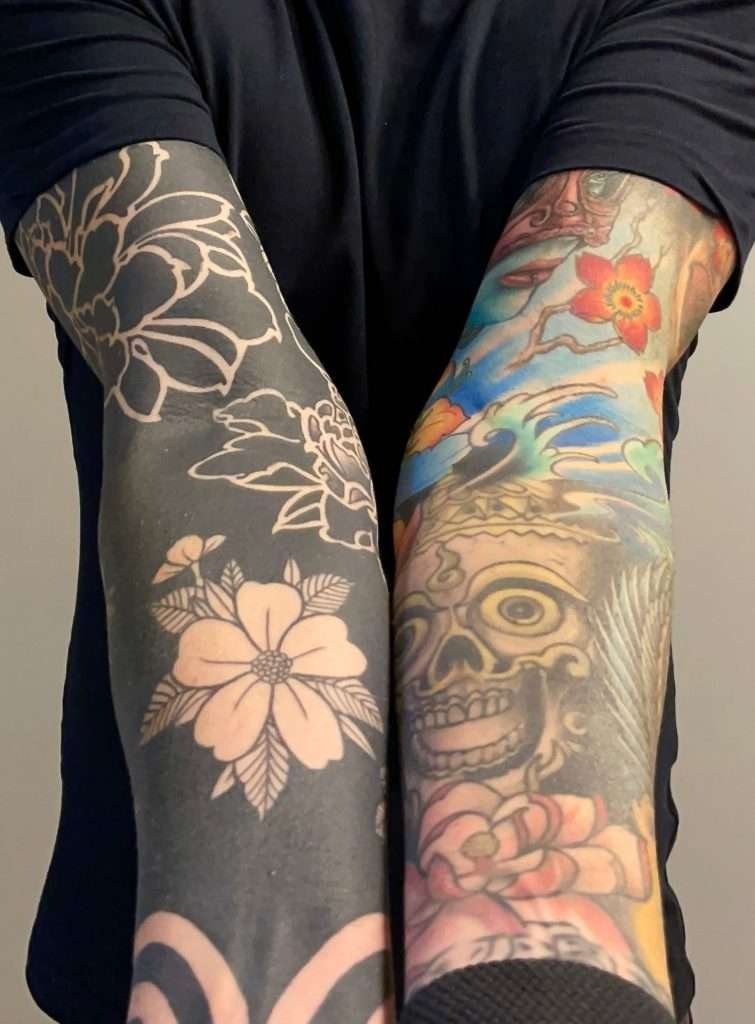
Everyone Regrets Their Blackout Tattoos!
I have no regrets about getting my blackout. And this is because I went about getting my negative space blackout tattoo the right way. I meticulously planned my blackout and I had a custom design created by a skilled blackwork artist. I didn’t just hop on the social media bandwagon.
These days, I prefer my blackout tattoo to my colored sleeve. As does everyone I meet, when they see my tattoos. As opposed to regretting my blackout, I’m actually considering getting my left arm blacked out by the same tattooist.
Like I said elsewhere on this website, I have no reason to regret my tattoo. Because I look at my own blackout like the body modification equivalent of a chalkboard. A blackout tattoo can be altered and it can change with you over time. Whereas with a colored tattoo, if you want a change, you really only have two options; a blackout or laser removal.
You only need to look at my Pinterest board below to see how infinitely malleable a blackout tattoo is. You can go over it with white ink or pastel colors and you can change the tattoo over time. If, after altering your blackout you get sick of it, you can blast over it with a new layer of black and start again.
Now, you can’t do that with a colored tattoo!
All Blackout Tattoos Are Just Coverups!
My blackout tattoo is actually a first pass tattoo. It’s not a coverup and there is nothing underneath it. In fact, most large blackwork seen today on social media are actually meticulously planned and executed first pass tattoos.
We’ve all seen headlines talking about covering up a tattoo you regret, with one that author believes you’ll regret even more. But in reality, those headlines are pure clickbait.
If anything can be gleaned from such claims online, it’s that far more people end up regretting their other styles of tattoo before returning to blackwork; the one style that stands the test of time.
Blackout Tattoos Are A Form Of Cultural Appropriation!
Blackout tattoos are not a form of cultural appropriation. This is repetitive clickbait claim designed to attract article viewers. Blackwork and blackout tattoos and are not cultural artifacts of African-American cultural identity and cannot be ‘appropriated’. Nor are blackout tattoos widely considered ‘cultural appropriation’.
Now, I have both a blackout tattoo sleeve and a university degree in ‘Cultural Sociology’. Unlike the interviewers and the interviewees in other articles online, I have the educational qualifications and actual experience to discuss the issue of ‘cultural appropriation’, as it pertains to blackout tattoos.
The basis for the claim that blackout tattoos are a form of cultural appropriation, rests on black skin being an integral part of the cultural identity of black people. And in the case of those making claims, it’s almost always in reference to the African-American cultural identity.
The claim is that by blacking out large portions ones body, other cultural groups (read others who identity as white), are appropriating what was once a source of shame but that is now integral to the identity of black people. And this is a false narrative.
4 Primary reasons why blackwork and blackout tattoos are not a form of ‘cultural appropriation’:
- Blackwork as a style of tattooing did not originate from a single culture. It formed from a mixing of styles present in many different cultures. And some of the earliest tattoos dating back over 5000 years were black. The first colors of tattoo ‘inks’ were black and blue;
- Blackout tattoos are not a consistent style and are in fact many different sub genres of blackwork all bunched together and mislabelled on social media. For example, I have a negative space ‘blackout’. And of all the tribal designs from which it could be said to have roots, Celtic would likely be the closest (Ireland, Wales, Scotland);
- Those sporting ‘blackout tattoos’ are not trying to affiliate themselves with, imitate or otherwise appropriate any form of black culture or the collective identity of black people. More often than not, they’re more inclined to align themselves with rock or punk collective identities and sub-cultures;
- Modern inks don’t resemble skin tone.
A Further Word On Claims Of Cultural Appropriation
Cultural appropriation doesn’t need to be a conscious choice. People can unknowingly and unintentionally engage in cultural appropriation. And yes, black skin is central to the African-American cultural identity.
African-American’s and black people in general are often discriminated against based on the color of their skin. It’s a fact. Yet, the use of large panes of black ink in tattooing is not a form cultural appropriation and does predate any notion of African-American identity (by thousands of years).
The mixing of particular tattoo styles and their evolution over millennia, cannot be simply claimed to upset one particular societal group based on a relatively new cultural identity and then stamped out. Trying to force one group’s values on others has its own term, ‘cultural assimilation’. And attempting to erase a societal norm or practice of another group is called ‘cultural erasure’.
Forced ‘cultural assimilation’ and ‘cultural erasure’ are two aspects that actually threaten African-American history and culture. So, for the social media loudmouths and those who would make claims of ‘cultural appropriation’ remember this – It makes you a hypocrite because you’re doing exactly what you’re railing against.
Note: Never once, in the many years I’ve actually had my blackout sleeve, have I ever had someone in real life look at my tattoo and raise the issue of cultural appropriation. The ‘common issue of cultural appropriation’, is only a common issue in the articles on the internet that claim it’s common. It’s a clickbait headline that gets views – that’s why all the spam sites write about it.
Conclusion: Don’t Believe Everything You Read Online
Hopefully after reading this article you’ve learnt one thing in particular. That you shouldn’t believe everything you read online!
Often, as with the case of blackout tattoos, what’s dressed up as objective fact online is nothing more than opinion. And frequently, those who dress their opinions up as fact, have no actual experience with the thing they’re commenting on.
As I’ve hopefully demonstrated throughout this article, a lot of what you’ve previously read about blackout tattoos is the misinformed views of those with no practical experience. It’s misinformation, pure and simple.
So, if you have your heart set on a particular blackout tattoo idea or any other form, variation or style of blackwork I say this, go and get that tattoo! You will, like me, be glad you did. Getting a blackout tattoo can be, contrary to others on the internet, a really good idea!
